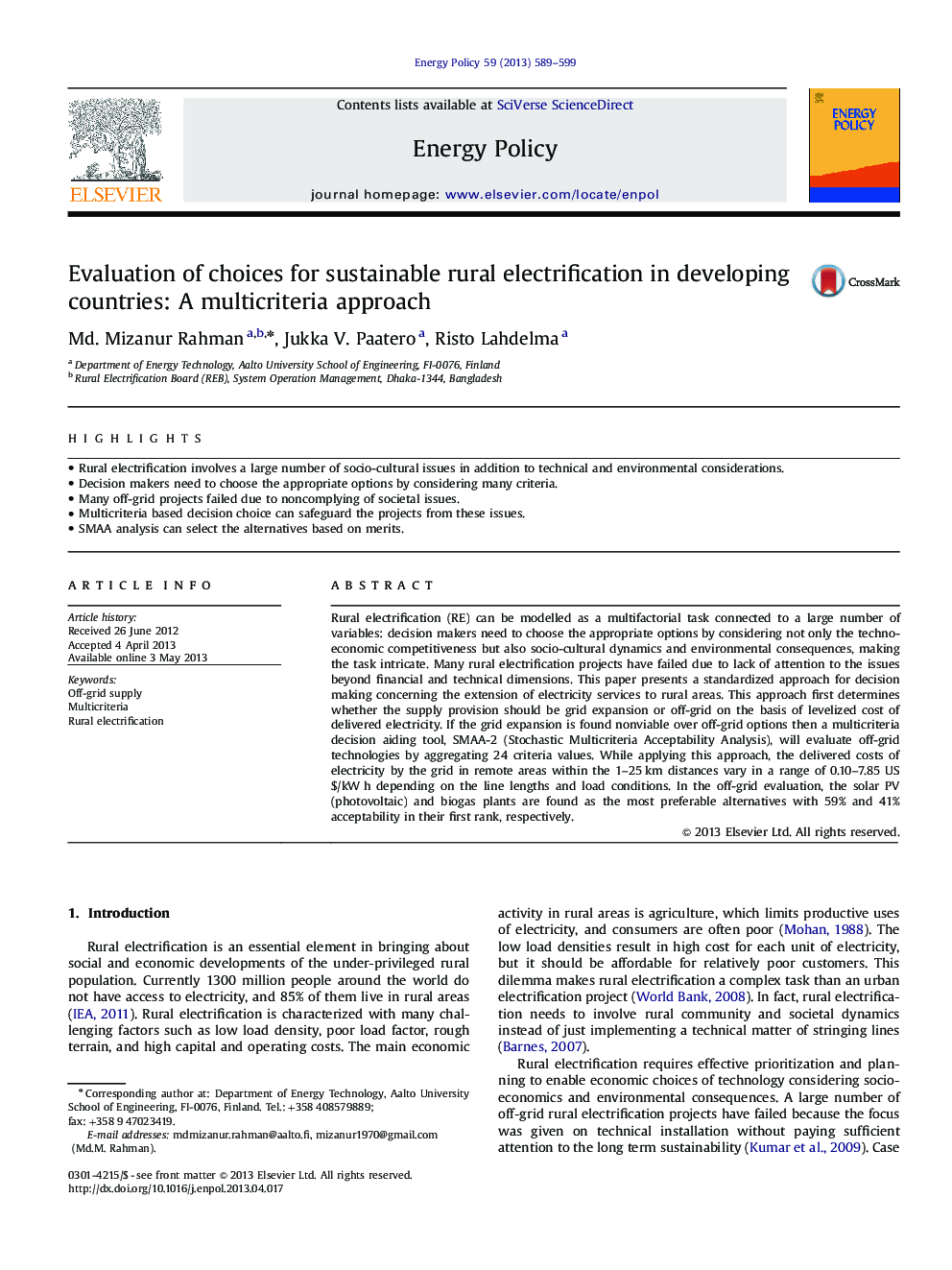| Article ID | Journal | Published Year | Pages | File Type |
|---|---|---|---|---|
| 7404557 | Energy Policy | 2013 | 11 Pages |
Abstract
Rural electrification (RE) can be modelled as a multifactorial task connected to a large number of variables: decision makers need to choose the appropriate options by considering not only the techno-economic competitiveness but also socio-cultural dynamics and environmental consequences, making the task intricate. Many rural electrification projects have failed due to lack of attention to the issues beyond financial and technical dimensions. This paper presents a standardized approach for decision making concerning the extension of electricity services to rural areas. This approach first determines whether the supply provision should be grid expansion or off-grid on the basis of levelized cost of delivered electricity. If the grid expansion is found nonviable over off-grid options then a multicriteria decision aiding tool, SMAA-2 (Stochastic Multicriteria Acceptability Analysis), will evaluate off-grid technologies by aggregating 24 criteria values. While applying this approach, the delivered costs of electricity by the grid in remote areas within the 1-25Â km distances vary in a range of 0.10-7.85 US$/kWÂ h depending on the line lengths and load conditions. In the off-grid evaluation, the solar PV (photovoltaic) and biogas plants are found as the most preferable alternatives with 59% and 41% acceptability in their first rank, respectively.
Keywords
Related Topics
Physical Sciences and Engineering
Energy
Energy Engineering and Power Technology
Authors
Md. Mizanur Rahman, Jukka V. Paatero, Risto Lahdelma,
